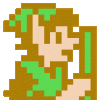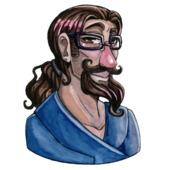First of all, I think this is not the right place for this question, since its pretty all around, but I have no idea.
I have been developing an Indie action rpg for the PC. I'm in contact with several artists for the concept art for the characters, in which I'm available to invest a reasonable amount of money. That part has been decided.
But when actually thinking about the value for the animations, I got overwhelmed. I talked to several artists, but on my own calculations, this is what is scaring me:
My game is 2d, and I'm using spritesheets for the animations, similar to the one below:

8 direction animations, with 4 frames per animation sequence. Which means 32 cells per animation sheet.
Every character has, in average, 5 different animations.
We have 13 main classes, 7 other npc models, and 10 creatures. This is the starting number.
This would mean 30 different characters, with 5 animations each, 150 animations! Each animation having 4x8 spritesheets, so, 32.
In the end, we need 4.800 cells of animation! This is a lot of work, and would cost a hell lot of money, which, again, we are indie, and Brazilian, 1 USD = 2 BRL, hahaha (yeah, I'm getting kind of offtopic here). But this has been bothering me. I do not wish to ask someone to work for a stupid price, nor do I want to make promisses. I'm looking for good artists and want to pay what they deserve.
So, my main question is, how can I work around this issue?
Is there any obvious mistake I'm making, in the sense of, do people usually duplicate several sprites, make things that are very similar to eachother, etc?
Thanks in advance for any advice.








